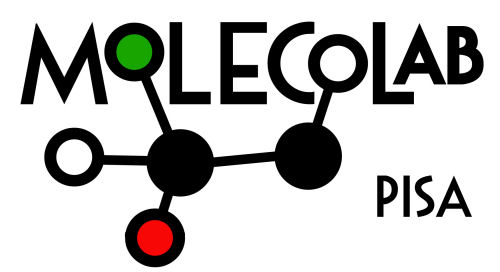![]() Our group develops polarizable embedding strategies for hybrid QM/classical strategies that are based either on a polarizable continuum, on a polarizable, atomistic MM treatment or on the combination of both.
Our group develops polarizable embedding strategies for hybrid QM/classical strategies that are based either on a polarizable continuum, on a polarizable, atomistic MM treatment or on the combination of both.
We have given major contributions to the field of continuum solvation models, including the Integral Equation Formalism Polarizable Continuum Model (IEFPCM), which is nowadays a widely recognized standard for the treatment of solvation effects, and ddCOSMO, a linear scaling algorithm to solve the electrostatic equations of the Conductor-like Screening Model, and is presently the fastest implementation of a polarizable continuum model available.
We are currently developing new implementations of various models (IEFPCM, linearized Poisson-Boltzmann) for classical and quantum solutes based on the domain decomposition paradigm. This work is done in collaboration with the groups of Eric Cancès, Yvon Maday and Benjamin Stamm.
We have developed a polarizable QM/MM strategy based on the induced point dipole model, named QM/MMPol. Recently, in collaboration with the group of Jean-Philip Piquemal, we have extended our implementation to the polarizable AMOEBA force field. In this field, we focus not only on the implementation of such an embedding scheme for molecular energies (including excitation energies) and properties, but also on state-of-the-art numerical implementations, that achieve linear scaling in computational cost with respect to the size of the MM subsystem thanks to the use of the Fast Multipole Method. This has allowed us to use a polarizable QM/MM multiscale description to perform Born-Oppenheimer Molecular Dynamics (BOMD) simulations, for which we have developed an interface between Gaussian, and Tinker. The same interface has been extended to NewtonX to perform nonadiabatic MD through the Trajectory Surface Hopping method; this extension has been made possible thanks to the collaboration with Mario Barbatti.
The developed methods have been also extended to the evaluation of the response properties need to simulate different spectroscopies of embedded molecular systems, ranging from UV-Visible, to IR and Raman, to NMR.
Three selected publications
Polarizable embedding QM/MM: The future gold standard for complex (bio)systems?
M. Bondanza, M. Nottoli, L. Cupellini, F. Lipparini, B. Mennucci
Phys. Chem. Chem. Phys. 22, 14433-14448 (2020)
Multiscale Models for Light-Driven Processes
M. Nottoli, L. Cupellini, F. Lipparini, G. Granucci, B. Mennucci
Annu. Rev. Phys. Chem. 72, 489-513 (2021)
How to make continuum solvation incredibly fast in a few simple steps: A practical guide to the domain decomposition paradigm for the conductor-like screening model
B. Stamm, L. Lagardère, G. Scalmani, P. Gatto, E. Cancès, J.-P. Piquemal, Y. Maday, B. Mennucci, F. Lipparini
Int. J. Quantum Chem. 119, e25669 (2019)
